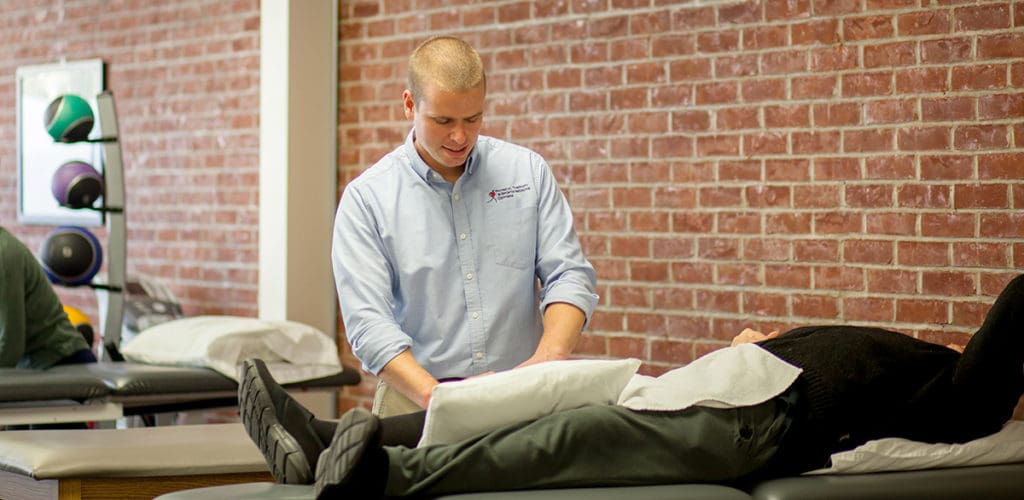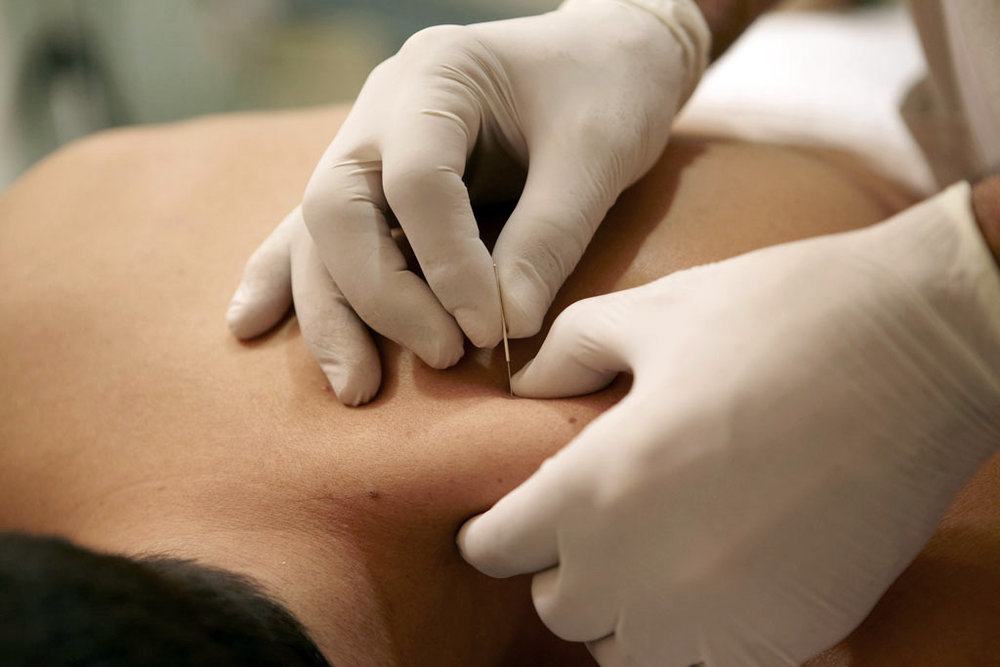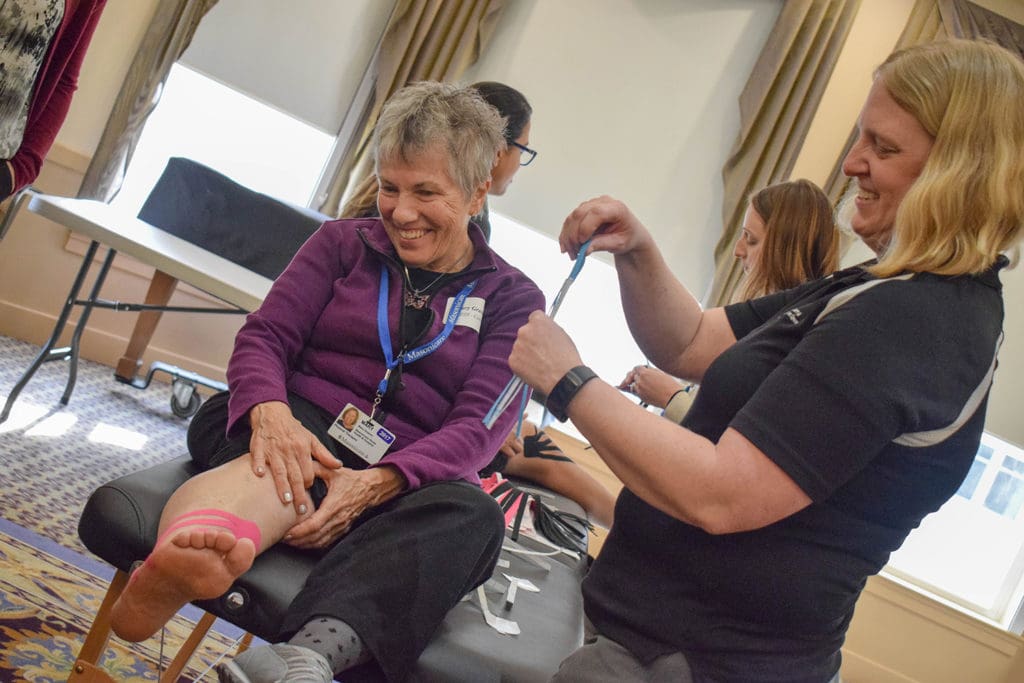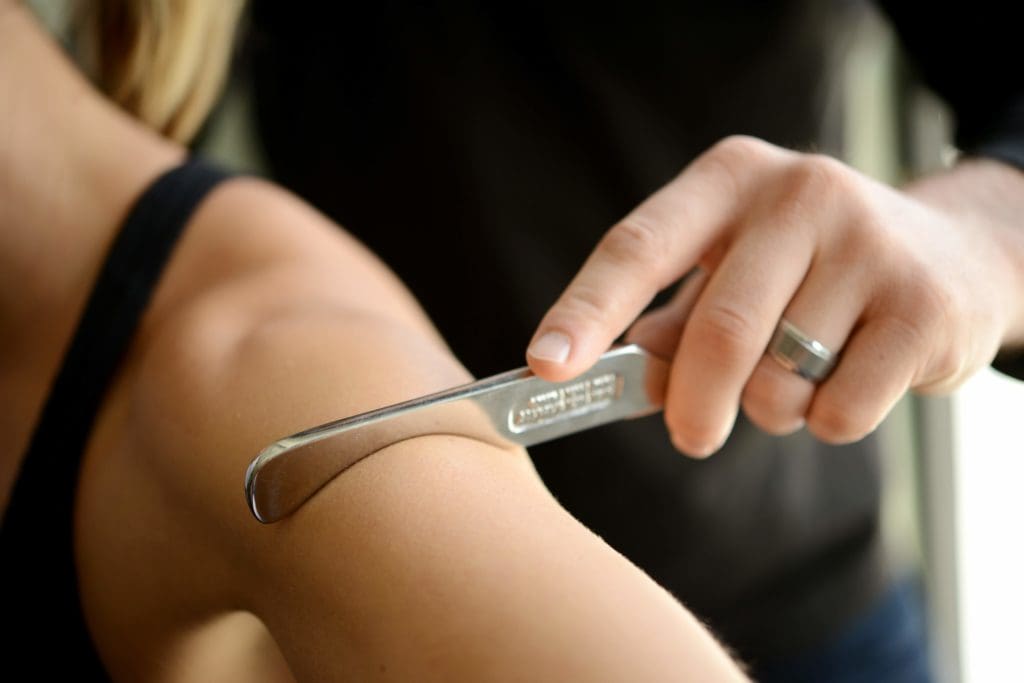A Newcomer’s Guide to Common (and Commonly Misunderstood) Physical Therapy Treatments
PAIN. It can keep you from moving. It can shoot through your body without warning during that important meeting. It can keep you up at night and generally make your life miserable. While physical therapy is often the most effective (and most cost-effective) treatment for your pain, many people are unfamiliar with common treatment techniques and overwhelmed at the thought of seeking PT.
At Physical Therapy & Sports Medicine Centers, our clinicians specialize in a wide variety of treatment methods, so no matter what’s causing your pain, we have a broad range of options to treat it. Although every treatment plan varies depending on your diagnosis and individual body, we’ve broken down some treatment methods that are commonly misunderstood.
Manual Therapy
PTSMC clinicians focus on manual therapy as a primary means to both identify and treat many different types of pain and injury. While it is, in theory, one of the simplest and most traditional treatment methods, it is often overlooked or underused in bigger PT clinics because it takes time, expertise and dedication.

Manual therapy is when a clinician explores and treats an injury by hand as opposed to relying on machines, hot/cold packs and exercises. Clinicians use their hands to put pressure on different areas of the muscle in order to provide pain relief, assist with mobilization and correct muscle spasms, tightness and dysfunction. Manual therapy is primarily used to increase mobility and alleviate pain, but a clinician may also use it to diagnose an injury in order to develop a treatment plan. Although it may seem simple, manual therapy is an essential and incredibly effective form of treatment.
Trigger Point Dry Needling
Trigger Point Dry needling involves inserting a monofilament (see: very, very thin and flexible!) needle through the skin and into the muscle, targeting trigger-points to allow deep tissue release.

A common misconception about dry needling is that it’s equivalent to acupuncture. In reality, dry needling is a technique founded on Western medicine research and science, whereas acupuncture comes from traditional eastern medicine and philosophy. Dry needling may seem daunting at first, but for many injuries it can be incredibly effective in delivering long term pain relief. If you’re squeamish about needles, dry needling may still be a good option thanks to the monofilament needles used. Monofilament needles are small, thin needles, much smaller than the ones used for shots or vaccinations, allowing them to be inserted into the skin with minimal pain or sensation. The treatment is relatively painless, although some patients experience muscle cramps due to the trigger-point release. Check out one of our patient’s first experience with dry needling in this video.
Kinesio® Tape
If you’ve been to a sports event lately, you’ve probably seen athletes donning brightly colored tape in intricate patterns around their knees and shoulders. Believe it or not, this is one of the most widely used methods in physical therapy treatment. Kinesio® tape, also known as elastic therapeutic tape, is cotton, self-adhering tape that’s used to treat a wide variety of orthopedic, neuromuscular, and neurological conditions.

“K-Tape,” as it is known, is designed to mimic the elasticity of muscle and the feel of skin, making it comfortable to wear. It is also flexible and breathable, making it a great alternative to traditional methods of taping, which are designed to restrict movement. One of the biggest advantages to Kinesio® Tape is that it provides support to the injury without restricting range of movement, promoting healing while allowing you to continue your daily activities pain-free.
Graston Technique®
Even if you’ve heard of the other three techniques we’ve mentioned, you’ve probably never heard of the Graston Technique® for soft tissue mobilization.

The Graston Technique® involves using stainless steel tools to mobilize soft tissue and provide pain relief. This unique approach allows for deeper tissue mobilization than manual therapy, making it ideal for post-operation rehabilitation and treatment for certain muscle injuries. The Graston Technique® can be used to break down scar tissue and provide pain relief and can be used as an alternative to opioids after surgery or serious muscle injury. The technique can also decrease recovery time and alleviate chronic pain. You can find out more about the Graston Technique® on our website here: https://ptsmc.com/treatments/graston-technique/.
What’s Next?
If you’re still overwhelmed and unsure of what course of treatment to take, check out our website or better yet, give one of our clinics a call! We’ll be more than happy to help you set up a free consultation to diagnose your injury and design a treatment plan to get you moving pain free again. We have over 30 clinics conveniently located across Connecticut and we accept most forms of insurance. Also, in most cases, you can see a physical therapist without a doctor’s referral!
